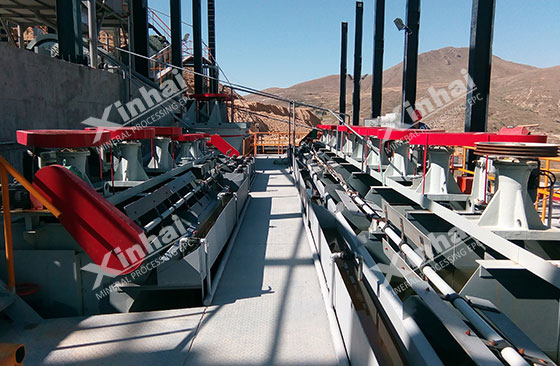
Gold extraction methods include a variety of technologies, among which flotation plays a vital role in gold ore beneficiation. Gold flotation technology utilizes the separation characteristics of mineral particles in flotation foam to effectively extract gold from ores, which makes it particularly important when processing complex ores and low-grade ores. In the gold flotation process, the application of mineral processing agents is crucial, including collectors, foaming agents, regulators and inhibitors. Collecting agents are used to enhance the flotation affinity of gold ore minerals, foaming agents help form a stable foam layer, and regulators and inhibitors are used to optimize flotation conditions and prevent other minerals from interfering with the separation of gold ores. Through the rational application of these agents, the recovery rate and concentrate grade of gold ore flotation can be significantly improved, thereby improving the overall mineral processing efficiency.

1. Conventional flotation
Process description: Conventional flotation is to add bubbles to the flotation tank so that the mineral particles in the pulp adhere to the surface of the bubbles, and then float to the slot to form a foam layer to achieve mineral separation.
Application and efficiency: This method is widely used in gold ore extraction, can effectively separate gold minerals, and is suitable for processing ores with a wide range of particle sizes. It has high efficiency, but requires precise control of the physical and chemical properties of the pulp and the dosage of the reagent.
2. Pretreatment flotation
Chemical pretreatment method: Chemical pretreatment of ores before flotation, such as oxidation, pickling or other chemical reactions, to improve the flotation properties of minerals.
Impact on flotation efficiency: Chemical pretreatment can significantly improve the flotation performance of minerals, especially when processing complex mineral combinations or low-grade ores, which can enhance gold flotation selectivity and recovery.

3. Overall flotation and differential flotation
Overall flotation: All minerals in the ore are processed as a whole, and gold is separated by adjusting reagents and operating conditions. It is suitable for the treatment of gold and associated minerals in the ore.
Differential flotation: Selectively float specific minerals according to the different properties of the minerals, such as separating gold and other sulfide minerals. This method can improve the grade and recovery rate of gold ore and is suitable for the treatment of complex ores.
4. Froth flotation and other flotation technologies
Advantages: Froth flotation technology is simple to operate, has good separation effect, and can process ores of different particle sizes. The stability and separation efficiency of the froth make it a common method in gold ore dressing.
Limitations: For very fine-grained ores or complex mineral combinations, froth flotation may face the problem of reduced efficiency. In this case, it may be necessary to combine other flotation technologies or further treatment methods.

1. Collectors
Xanthates: widely used in gold flotation, with strong selectivity for gold, but with greater environmental impact.
Dithiophosphates: suitable for processing complex ores, can effectively separate gold and other minerals, with superior performance.
Amino acid collectors: environmentally friendly collectors, with good selectivity for gold and environmentally friendly.
2. Frothing agent
Polyvinyl alcohol (PVA): forms a stable foam layer, often used in flotation to improve the separation effect of minerals.
Fatty Alcohols: enhances the stability of foam and is suitable for different types of ore processing.
Resin foaming agent: used to generate an efficient foam layer and provide good mineral separation performance.

3. Adjusters
pH adjusters (such as lime): adjust the pH value of the pulp to optimize the flotation process and ensure the best effect of the reagent.
Sulfide adjusters (such as sodium hydroxide): used to adjust the chemical environment of the pulp and affect the flotation characteristics of the mineral.
Acid adjusters (such as ammonia): used to adjust the acidic environment to ensure the stability and effect of the flotation process.
4. Dispersant
Polyacrylamide (PAM): Prevents the aggregation and precipitation of mineral particles and ensures the uniformity of the flotation process.
Lignosulfonates: used to disperse particles in the slurry to improve the stability and efficiency of flotation.

In summary, the application of flotation technology in gold ore beneficiation is crucial to improving gold recovery and concentrate grade, and the most appropriate process can be selected based on the characteristics of the ore. In addition, the rational application of flotation reagents is also the key to improving the flotation effect, which can significantly improve the overall efficiency of gold mine flotation, thereby achieving more efficient gold mine processing and resource utilization.
To find out more about our products and solutions, please fill out the form below and one of our experts will get back to you shortly.